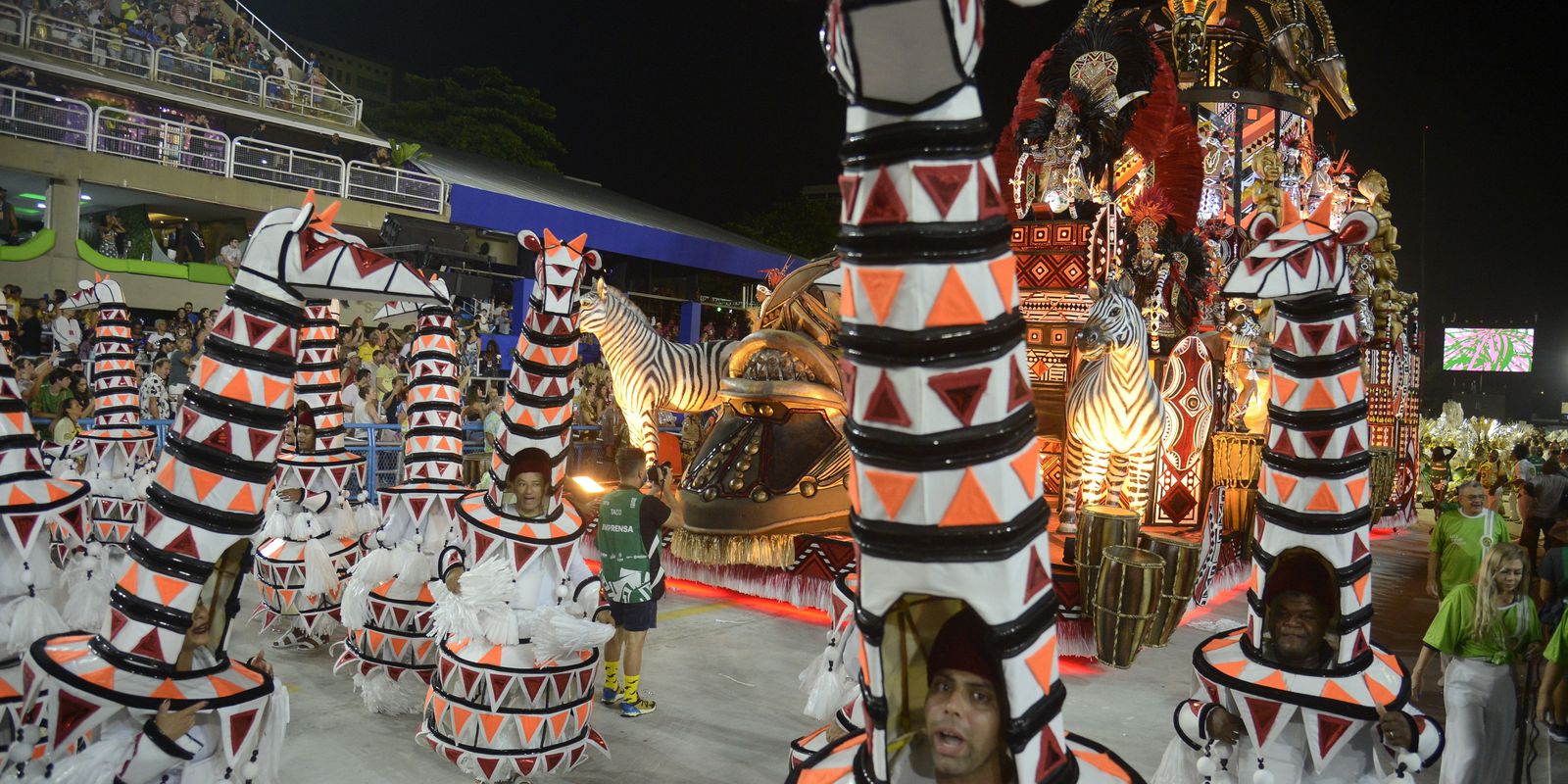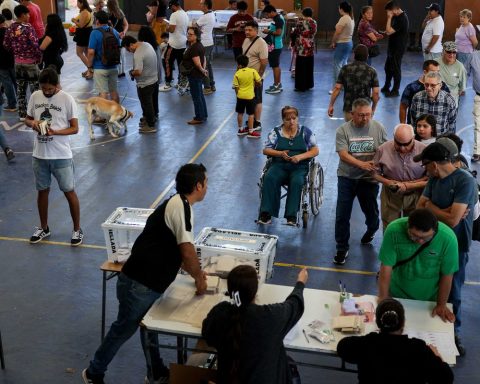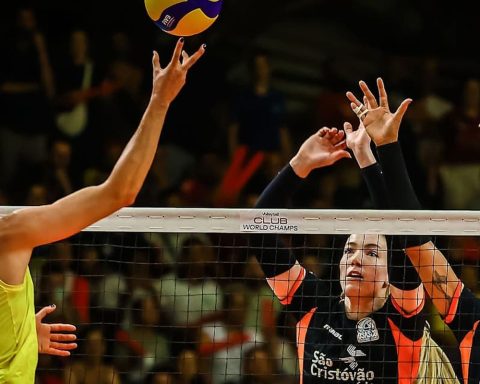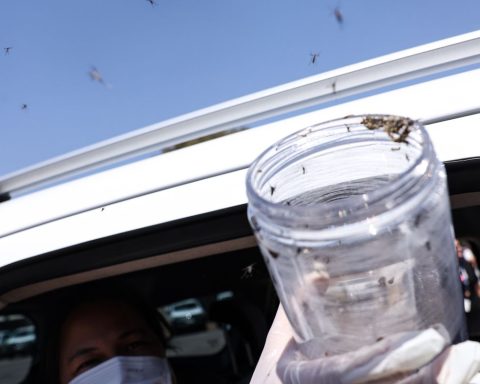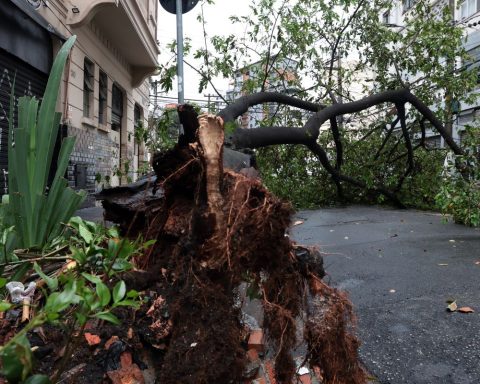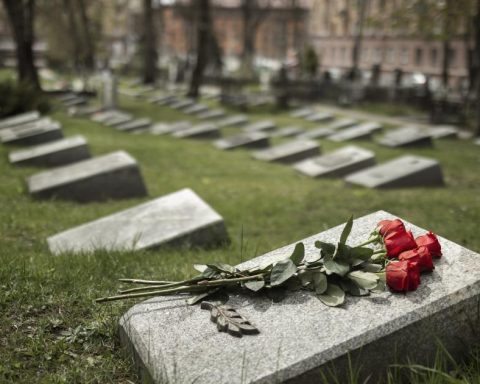When the siren rang and the gate opened, the carnival elite returned to show itself at Marquês de Sapucaí, on the night of this fridayFriday (22), after two years away from the samba temple. The presentation of the first six schools of the Special Group started promptly at 10 pm.
The opening was performed by Imperatriz Leopoldinense, by the carnival artist Rosa Magalhães, with the theme Meninos eu vivi… It is a tribute to Arlindo Rodrigues, the carnival artist who took Imperatriz to the first championship in 1980.
As is tradition, the strength of Rosa’s carnival is in the details of the floats and costumes, all built with great perfection and technique.
The front commission presented, as a tripod, a locomotive and a wagon flanked by mirrors. On top of the Trem das Memories, members came representing Lamartine Babo, a plot from 1981, when the Empress won her second title, and Dalva de Oliveira, honored at the last carnival in Arlindo, in 1987.
Between the master-room and flag-bearer couple and the first wing, the school brought a tripod with a huge mobile sculpture by Arlindo, who applauded the entrance of the association. The wings and floats also made references to the carnivals he prepared for Salgueiro, where he won five titles between the 60s and 70s, and for Mocidade, where he was champion in 1979.
Then it was Mangueira’s turn, which this year honored three great personalities of the school: Jamelão, Delegado and Cartola. The development of the Angenor, José and Laurindo plot was, once again, left to Leandro Vieira. Upon entering the avenue, Mangueira raised a large part of the public in the stands. The front commission innovated with a lightning change of clothes. Within seconds, the dancers had swapped their black, white and gray outfits for pink-green suits.
The Mangueira of the past was remembered in the car abre-alas, Teu Cenário é Poesia, which brought caricatured sculptures of the three artists and the sambista Serginho do Pandeiro, performing the traditional acrobatics with his musical instrument.
During the parade, the main interpreter, Marquinho Art’Samba, felt sick and had to be attended by the Fire Department. Despite this, the green and pink colored the stands with much applause in front of the exhibitions of the front commission and the couple of master of the room and flag bearer.
The third school to set foot on the avenue, Salgueiro, by carnival artist Alex de Souza, proposed a reflection on the legacy of enslaved Africans for the country, with the theme Resistance.
The school walked through the different aspects of black culture in Rio of Januarysuch as candomblé, umbanda, pagode, jongo, funk and capoeira, and the places where these manifestations resist, such as terreiros, Pedra do Sal, Cacique de Ramos and Viaduto de Madureira.
The front commission presented the dance of black heroes, with dancers painted in bronze, as if they were sculptures that deserve to be highlighted in public places in the city, such as Xica Da Silva, Ruth De Souza, Machado de Assis and André Rebouças. The tripod also presented smoke and sand effects.
A wing of ballerinas drew attention in the parade. It was a tribute to Mercedes Baptista, the first black Brazilian dancer, who marked her participation in the school’s history. To represent Mercedes, who was on the avenue was Ingrid Silva, also a black dancer, member of the Dance Theater of Harlem, in New York.
An allegory that also stood out was the Black Carioca, which symbolized the famous Baile Charme under the Negrão de Lima viaduct, in Madureira, in the north zone. Funk was also represented in this sector of the parade. The last car, Resistência Continua questioned racism and violence against the black population.
Fourth school to occupy Sapucaí, São Clemente bet on a tribute to comedian Paulo Gustavo, killed by covid-19 last year. With the plot My life is a play, the carnival artist Tiago Martins remembered the actor with nostalgia, but without sadness, making the stands vibrate with the passages of the comedy idol.
At the beginning of the parade, the school had problems connecting the two parts of the opener car.
What also presented problems was the tripod of the front of the commission, a huge dressing room, its lights did not turn on and it was stopped for a few minutes on the avenue, before reaching the judges’ booth.
The commission brought drag queens with dresses in the colors of the rainbow, symbol of the LGBTQI+ community. In the presentation to the judges, the drags climbed on the tripod and part of them was replaced by members dressed as Dona Hermínia, famous character of the comedian. A curtain opened to reveal Paulo’s mother, Déa Lúcia, sitting on a yellow sofa.
Dona Hermínia was also remembered in the costume of the drums and in one of the allegories. Despite the problems, the school managed to finish the parade within the time limit.
Then it was the turn of Viradouro, current champion, who are looking for their third title. The plot was the carnival of 1919, after the Spanish flu pandemic, which killed millions around the world, with the plot There is no sadness that can withstand so much joy, by carnival artists Marcus Ferreira and Tarcísio Zanon.
Viradouro took allegories and wings with costumes representing blocks and carnival figures. The audience was thrilled with the performance of the drums led by Mestre Ciça. At various times during the parade and, in particular, in front of the judges’ booths, the percussionists would bend down and in the midst of them appeared five percussionists who were marking with metal plates.
The responsibility for closing the first day was up to Beija-Flor de Nilópolis, with a theme talking about black culture in the formation of the Brazilian people, with the plot Empretecer o Pensamento is listening to the voice of Beija-Flor, developed by Alexandre Louzada.
The parade began with the use of black and intense blue colors with an opener that was divided into three parts. On the front was a hummingbird, symbol of the school. But already in the second car the difficulties began, for not being able to put all the highlights on top of the allegory, the car was stopped still in concentration before turning to the avenue.
With the abandonment of including all the highlights, the car was finally moved, but it had already caused disturbances in the harmony of the school, with a hole between the wings.
The other one that got stuck in the concentration was the fourth car called Escrevivências that showed a favela with many books. After solving the problem, the car entered the avenue and followed the parade to the end. The school ended the parade already with the sun rising on the horizon.
